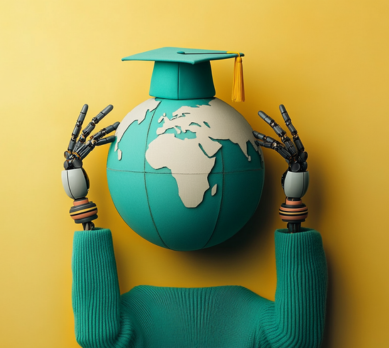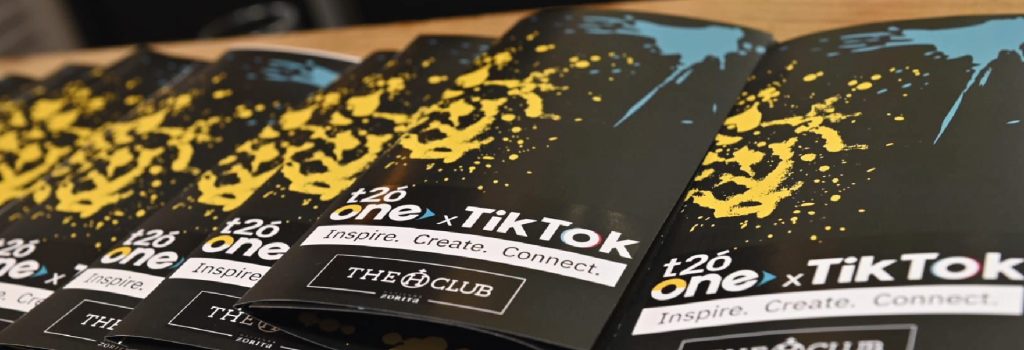Over the past few years, the education industry has undergone a rapid transformation driven by the integration of digital technologies. In Spain, the launch of the Digitalization Plan for the Education System in 2021 marked a turning point, accelerating improvements in connectivity, equipment, and teacher training. However, the implementation still varies significantly across autonomous communities and educational centers, highlighting the need for more equitable and sustained policies over time.
At a societal level, the growth of digitalization has sparked a deep debate. While some sectors propose limiting the use of technological devices in early stages due to potential effects on development, many experts believe the real challenge is not to restrict, but to educate individuals to coexist with these technologies. In this new paradigm, educating students not only to consume technology but also to understand it, use it creatively and critically, and question it has become a priority.
In 2025, the evolution of digital learning is heading toward increasingly precise personalization. The widespread incorporation of Artificial Intelligence (AI) tools will be one of the most profound changes in the education system—from remote exam supervision (proctoring) to adaptive teaching models that can adjust to each student’s profile and learning pace.
Alongside AI, technologies like Augmented Reality (AR) and Virtual Reality (VR) are opening new pedagogical possibilities, allowing educators to simulate complex environments, laboratories, and immersive experiences to promote a deeper understanding of content. Meanwhile, Big Data is beginning to play a key role in educational decision-making—from improving academic performance to early detection of school dropout risks. Robotics is also promoting transversal skills such as creativity, collaboration, and problem-solving, while also introducing students to new technological environments.
However, for this digital transformation to be truly effective, the pedagogical model must be rethought. It’s crucial to recognize that students are at the center of the learning process, which is why continuous and up-to-date training for teachers must be guaranteed. At the same time, technological advancement must be accompanied by solid regulatory frameworks that protect privacy, prevent fraud, and minimize the risks associated with cyberattacks.
Digitalization in the education sector is already underway. As such, systems must be able to anticipate, adapt, and innovate to be better positioned to face future challenges and, in doing so, educate the next generations in an ever-changing, demanding, and deeply technological environment.
Artificial Intelligence is becoming a key pillar within the education sector, as it enables institutions to personalize learning and optimize processes in areas such as academic management and early detection of student difficulties.
Thanks to this technology, it’s possible to tailor content to the specific needs of each student, improve learning efficiency, and strengthen the relationship between teachers and students. Automated learning analytics is becoming an essential tool that allows real-time monitoring of academic progress, identifying behavior patterns, and designing more effective pedagogical interventions.
In parallel, new forms of methodological innovation are emerging, combining emerging technologies with student-centered approaches to foster more active, personalized, and meaningful learning.
AI-powered virtual assistants are beginning to play a key role in student support, providing immediate help, academic guidance, and personalized responses in both physical and virtual settings.
Meanwhile, robotics is transforming education by automating various tasks and creating interactive environments, while technologies such as VR and AR enable more engaging and safer learning experiences, especially useful in technical or high-risk fields.
In this context, the STEAM approach (Science, Technology, Engineering, Arts, and Mathematics) gains greater relevance, promoting interdisciplinary skills essential for the future and preparing students to tackle complex challenges with creativity and critical thinking.
At the same time, macrodata analysis allows institutions to anticipate needs, assess academic performance, and make more informed strategic decisions. Finally, 5G is boosting real-time connectivity between students, teachers, and digital platforms, facilitating access to high-quality resources and enhancing the learning experience, both in-person and remotely.
All of this contributes to building a smarter, more inclusive, innovative, and adaptable educational ecosystem suited to the challenges of the 21st century.
Main digital trends in the Education sector
1. Artificial Intelligence
Artificial Intelligence is transforming the education sector by enabling more adaptive teaching focused on the real needs of students. The use of advanced algorithms and data analysis allows for the personalization of content, pace, and learning methods, leading to better understanding and academic performance. These tools also help identify learning difficulties early on, preventing school dropout and providing a more engaging and effective educational experience.
2. Virtual Reality
Virtual and Augmented Reality are offering new educational pathways through immersive experiences that promote learning by doing. These technologies help create more interactive classrooms where students can explore, experiment, and—most importantly—form emotional connections with the content. This approach not only enhances academic learning but also supports emotional development and student well-being, fostering more holistic and meaningful education.
3. Big Data Analytics
The use of Big Data is becoming a key tool in education, enabling the prediction of student performance and helping prevent dropout. By processing and collecting large amounts of data, learning can be personalized, pedagogical decisions optimized, and academic efficiency improved. These technologies are transforming the way teaching and learning are approached, making it possible to adapt in real time to the diverse needs of each student.
4. Robotics
Robotics is fostering the development of essential skills from an early age through creativity, teamwork, and the encouragement of critical thinking. By integrating this technology into classrooms, students are better prepared to face future challenges with an innovative mindset, bridging the gap between theory and practical application.
Other Digital and Technological Trends
Today, new technological trends are helping the education sector incorporate new learning platforms that adapt to each student’s pace. These innovations are being supported by local investment models aimed at strengthening educational infrastructure and communities, as well as support systems and on-demand tutoring with no waiting times. Additionally, extracurricular STEAM programs are motivating students to pursue future-focused careers.
What Will You Find in This Report on “Digital Trends in the Education Sector 2025”?
In addition to a detailed breakdown of the main industry trends and their real-world applications, this report features insights from Héctor Paz, CEO and Co-founder of Imascono, who addresses key questions such as:
- The most transformative emerging technologies for the education sector in the coming years.
- AI-based solutions for personalizing the learning experience.
- Technological tools that help improve learning outcomes.
- The main technological challenges in education and how to overcome them.

Want to discover how all these trends are being put into practice?
We’ve gathered real-world use cases from leading companies around the globe. Keep reading and download the full report for free!
1./ Artificial Intelligence: Teaching That’s Increasingly Adaptive
- Georgia Tech: Automated responses to frequently asked questions.
- New Town High School: Personalized math instruction.
- University of Sydney: The benefits of personalized learning.
- Ivy Tech College: Using algorithms to fight school dropout.
2./ VR/AR: Immersive Experiences for Learning by Doing
- Kai XR: Travel to the pyramids of Egypt without leaving the classroom.
- Merge Edu: Science lessons come to life in 3D.
- Oroi: Virtual reality to promote emotional well-being among the elderly.
- Better Kids: Emotional learning through play and augmented reality.
3./ Big Data Analytics: Predicting Academic Success and Preventing Dropouts
- Beetools: Data-driven English learning.
- IES Ribera del Tajo: Transforming vocational training through Big Data.
- CUN Colombia: Academic efficiency powered by analytics.
- DreamBox Learning: Real-time personalized math instruction.
4./ Robotics: Technology to Develop Skills from an Early Age
- Robotix C360: Real classroom impact through applied robotics.
- Dagabot: Colombian-made robots that encourage critical thinking.
- FIRST LEGO League: Inspiring future STEM careers.
- La Roboteca: Lending robots with institutional support.
Other Trends: Automated learning analytics, methodological innovation, virtual assistants, and STEAM
- Squirrel: Algorithms that teach at each student’s own pace.
- San Justo: Local investment in education that pays off.
- EDU: Always-on student support with no wait times.
- IGNITE: STEAM extracurriculars that inspire the future.
Download the full report “Digital Trends 2025 | Education Sector” here:
Want to stay updated with the latest trends in other industries too? Check out all the t2ó Industry reports.



